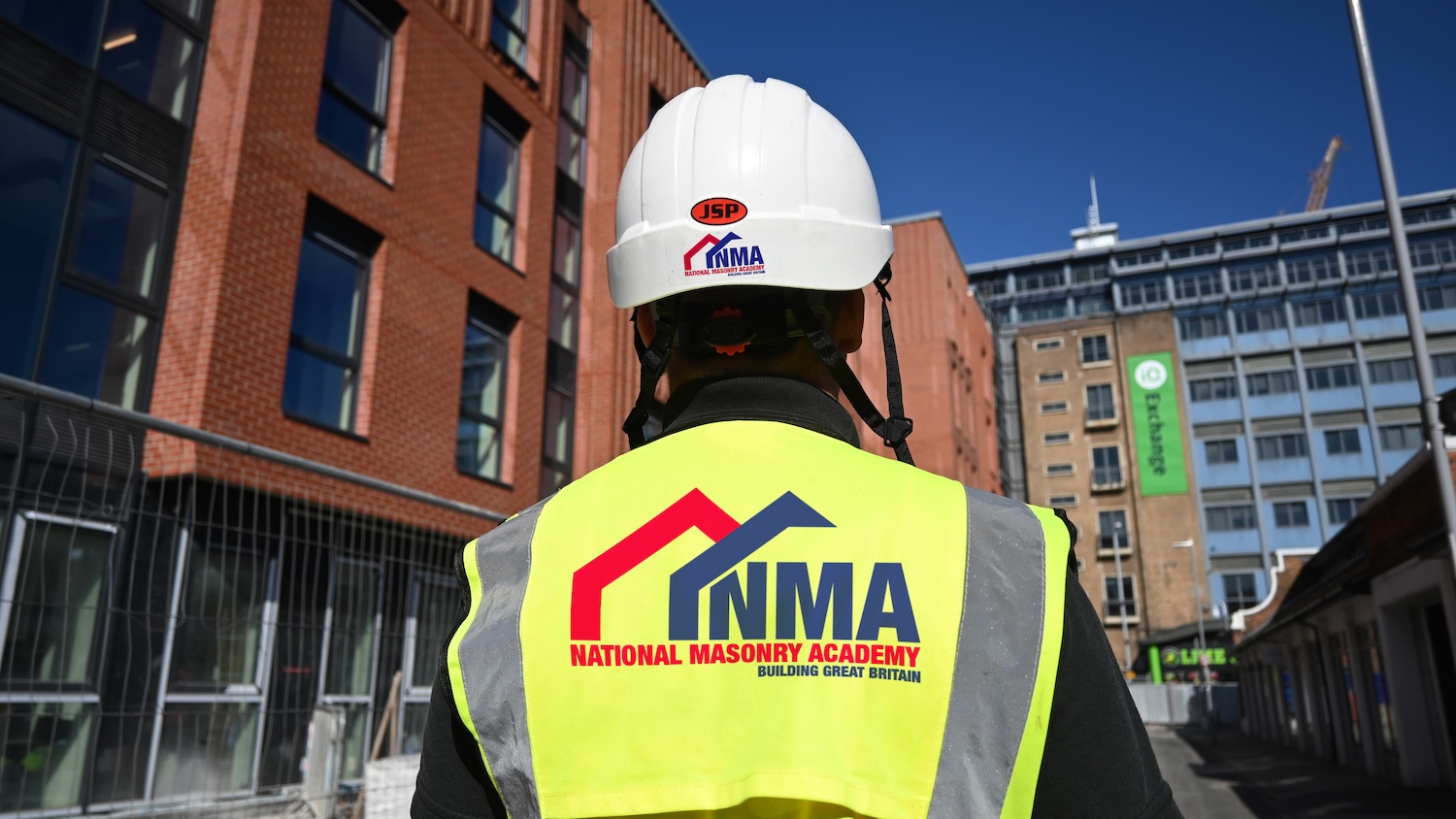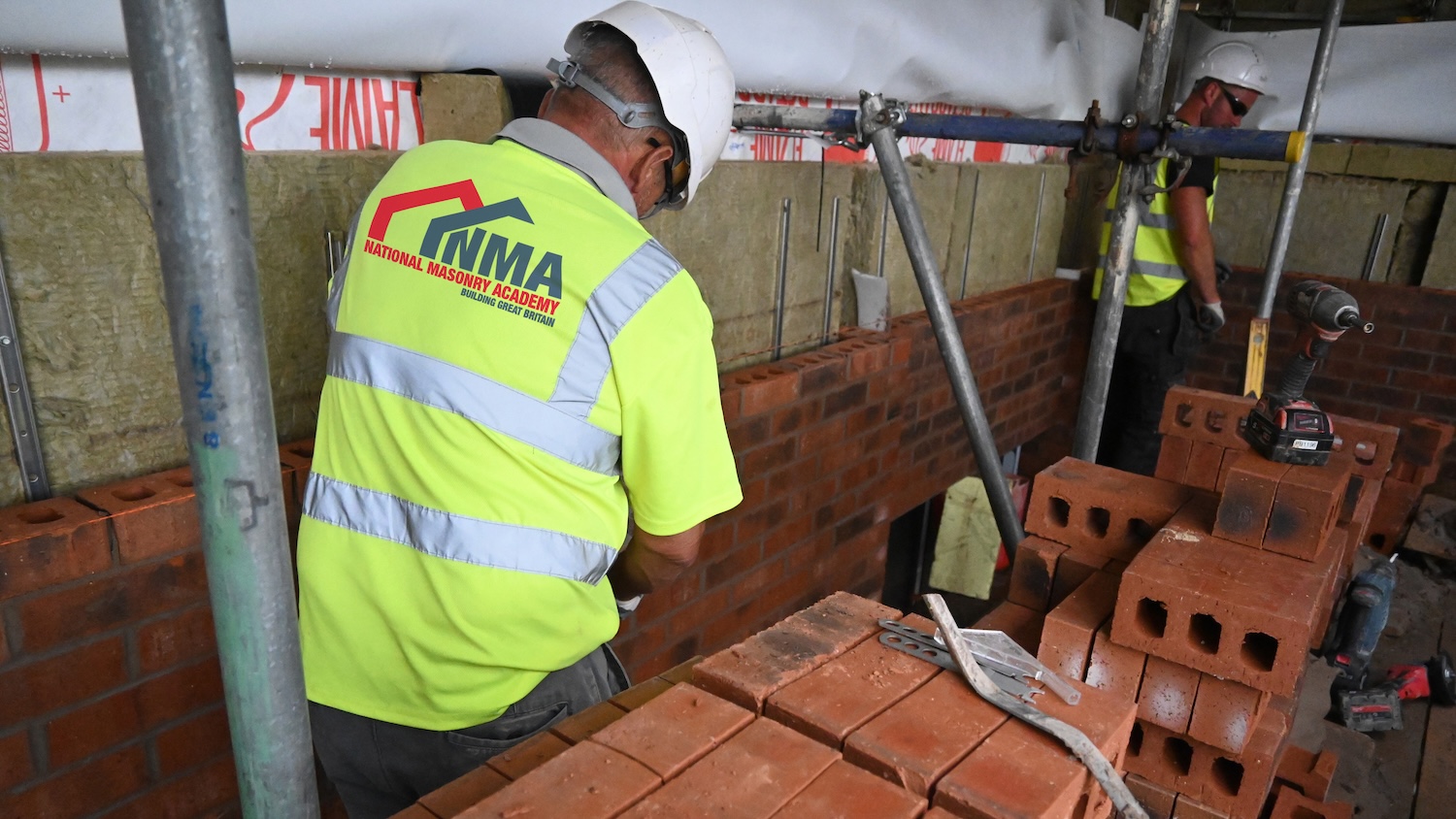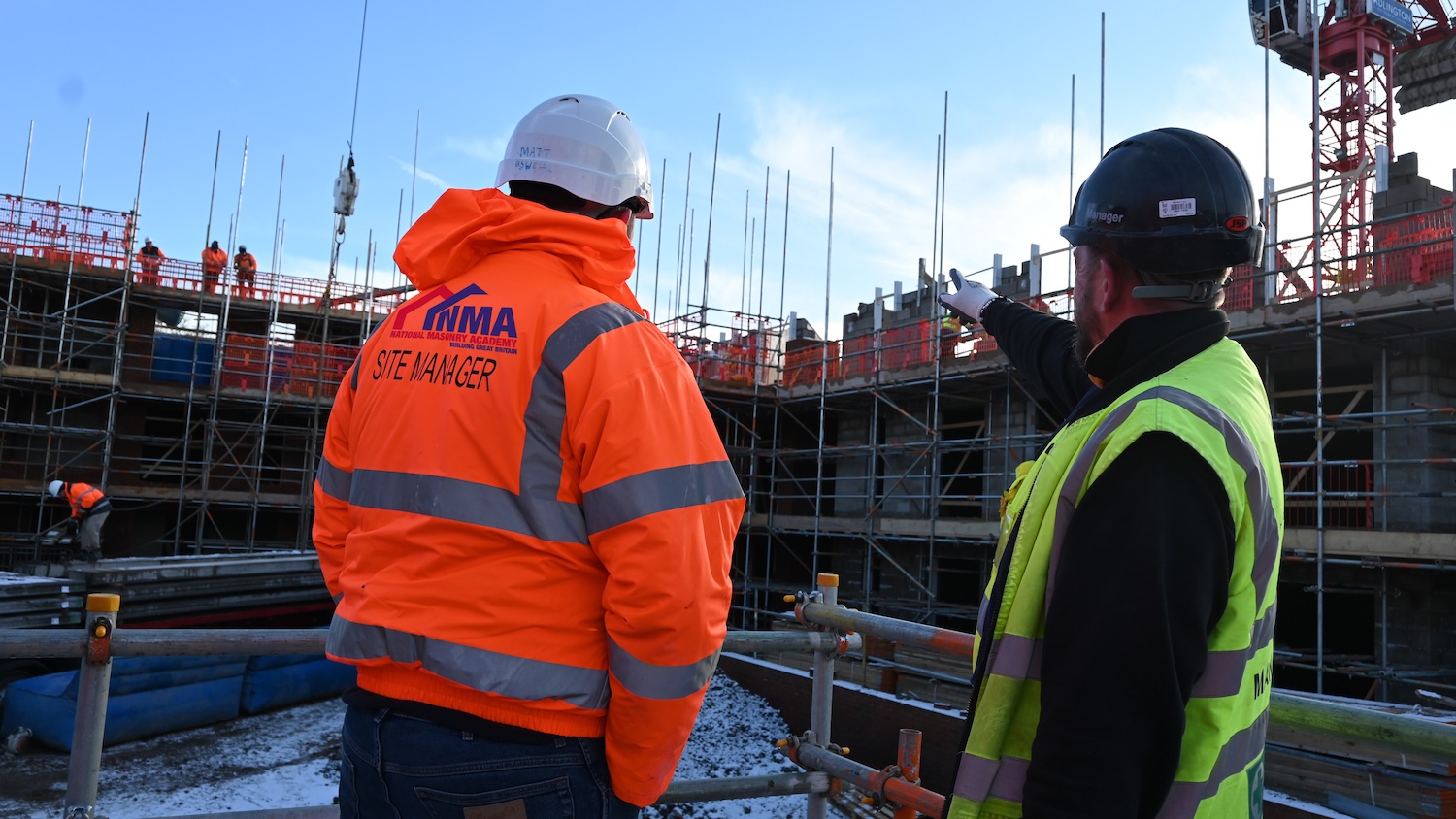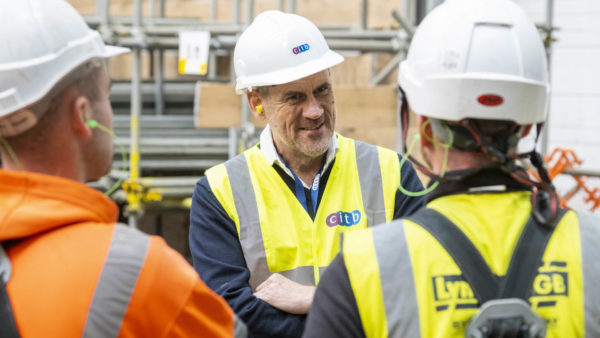
A new association promises to solve the masonry sector’s recruitment and training challenges with an approach that targets micro companies.
March this year saw the launch of the Masonry Association of Great Britain (MAGB), a new organisation that aims to boost recruitment and upskilling in the masonry sector.
Current systems are not working, says the association’s CEO, Eve Livett, because they don’t recognise the fact that the industry is largely made up of micro companies and self-employed people.
MAGB wants to change the structure of apprenticeships and make training more relevant and accessible to a wider range of companies and individuals.
“There have been a lot of barriers to training, and issues with training providers,” says Livett. “They don’t align to the industry needs or are slightly behind what is required by the industry.
“Because we are employer led, we have the upper hand because we know the needs and requirements of employers. Our training will be proactive not reactive, with training tailored to SMEs.”
Representing the whole sector
Livett, who previously led the Association of Brickwork Contractors, has co-founded MAGB alongside Christian Watson, chair of the Phoenix Group, and Malc Hancock, Phoenix’s construction director.
The aim of MAGB is to represent the entire sector, says Livett: contractors, manufacturers and suppliers across brick, block, stone, glass reinforced concrete (GRC) and associated products.
Currently MAGB has two members, both brickwork contractors, Phoenix and Bliss. There are six companies waiting to join, says Livett, including a major membrane supplier.

MAGB will deliver training through its National Masonry Academy from a network of locations around the country. The first will be in Sheffield, with facilities earmarked in Manchester, Derby, Newcastle, and Nottingham.
Membership will be charged on a sliding scale, with training offered at a discounted rate for members. MAGB also plans to access CITB training pots.
“A lot of our funding will come from CITB,” says Livett. “There’s so much that CITB offers that people don’t know about and so much work to be done to let people know. There is a lot of funding that reaches over to the self-employed as well.”
The government’s announcement in March that it will invest £600 million in construction training will swell some of those funding pots.
A perfect storm
Like many trades, bricklaying finds itself in a perfect storm. The government wants to ‘Get Britain Building’ yet many of the industry’s experienced tradespeople are hanging up their trowels and new starts are failing to maintain numbers, let alone boost them.
The Home Builders Federation estimates that the sector needs 20,000 new bricklayers to meet the government’s ambitious plan to build 1.5 million homes during this parliament, which equates to more than 300,000 homes a year.

Because we are employer led, we have the upper hand because we know the needs and requirements of employers. Our training will be proactive not reactive, with training tailored to SMEs
To put that in perspective, just 1,990 bricklaying apprentices qualified in 2023/24.
The construction industry also has a problem retaining the apprentices it does recruit. A September 2024 report from the British Association of Construction Heads highlighted that there was a 47% drop-out rate for construction apprentices.
The main reason for leaving, according to Department for Education research cited in the report, is that apprentices are fired or made redundant. Others leave due to low salary or fear that they will not pass their end-point assessment (EPA).
Return to traditional ways
Livett believes that the current model where apprentices start work immediately, spending one day a week in college, does not serve either apprentice or employer.
MAGB proposes to revert to a more traditional model for apprenticeships with block release rather than day release, where apprentices start their training with eight weeks in a training centre or college.
“That means that they will be productive from day one and it will support retention, which we struggle a lot with,” says Livett.
“For that first eight weeks, the whole cohort will come together and bond, before they go out to work and then come back together for the next block.”
Looking further ahead, Livett would like to set up pre-apprenticeship schemes, so that both learner and employer can ‘try before they buy’.
Ensuring apprentices are committed and understand what they are signing up for will make the onboarding process less challenging for employers, which would be particularly valuable for small companies.
Aside from issues of retention and productivity, employers are finding that new starts do not have all the skills they need for the workplace, says Watson.
“Many existing courses still focus heavily on traditional skills without enough emphasis on modern site practices,” he says.
“For example, apprentices often aren’t taught to work efficiently in teams, handle real-world productivity targets, or use newer materials and construction methods being adopted across the industry.
“There’s also often a lack of focus on health and safety leadership, digital tools like construction apps, and the soft skills that apprentices need to be truly site ready.”
Upskilling and competence
As well as training the next generation, MAGB wants to offer more business-friendly ways to upskill existing tradespeople. This is vital, says Livett, since all construction employers will have to prove that their workforce is competent.
“Upskilling is a challenge because of the way that construction is evolving,” she says.
“[The pace of change is] fast and there are a lot of things on the horizon such as green skills… the Building Safety Act, new materials [etcetera] that will impact on designs.”

But even the mention of training can drive people away from the industry. The phasing out of Grandfather Rights, which allowed experienced workers to hold Construction Skills Certification Scheme (CSCS) cards without having NVQs, has done just that.
“A lot of the older generation think they don’t need to do training,” says Livett. “That was the issue with Grandfather Rights and NVQs, but that was more a problem with how it was promoted. People thought they would have to go back to college. But that is not the case at all.”
Alongside apprenticeship training, which MAGB plans to launch next year, its academies will deliver CITB courses and NVQs, with assessments on site.
“The majority of upskilling training will be done on site,” says Livett. “Our trainers will come to site, which I think makes it a lot easier for SMEs, who would otherwise lose a whole day of work if they had to come to a centre.”
Lack of trainers
There’s one caveat with this approach though: there is a dearth of these flexible, modern-skill-savvy trainers. “There is a shortage of qualified trainers with real-world site experience,” adds Watson.
Livett’s solution would be to train the trainers, recruiting them from the construction workforce.
“The industry is lacking in a proper training programme that takes long-served tradespeople through a programme so that they can move into the classroom to teach,” she says. “I’m really keen to look at something around that.”
Another challenge for MAGB will be reaching those companies that are the lifeblood of the brickwork and wider masonry sector.
“I have worked with CITB in the past, and they have found it extremely hard to reach micro companies – although they have had more success recently with Employer Networks,” says Livett.
MAGB plans to use those Employer Networks, which provide access to training and funding on a local basis, to access some small players.
TikTok and Instagram will be important channels through which to reach micro companies, says Livett.
She also sees social media as a good way to attract young people. Recruiting people with the promise of high wages isn’t always helpful, she says, since new starts are often disappointed with their initial pay.
Livett believes that focusing on the creativity, skills and beauty of masonry and construction will press more buttons with the younger generation.
With skills shortages already hitting the industry, MAGB’s new ideas should be welcome. But as a micro company itself, the association certainly has its work cut out.
Now it needs more companies to get on board so that its big plans and aspirations can be put into practice.
Apprentices now and then
Phoenix construction director Malc Hancock’s career in construction started 40 years ago as an apprentice, aged 15.
“When I started, the attitude was often ‘sink or swim’; you learned quickly by being thrown in at the deep end,” he says.

Today’s apprentices are looking for more structured support, clear guidance, and recognition of their progress
“Today’s apprentices are looking for more structured support, clear guidance, and recognition of their progress. They’re also growing up in a different world: technology, safeguarding and workplace expectations have changed dramatically.”
Rather than bemoaning the attitude of new starts today, companies looking to employ apprentices need to alter their approach, says Hancock.
“For employers, it means adapting how we train: being more structured, more communicative and offering a workplace that helps them build confidence as well as skill.
“It’s not about lowering standards; it’s about better supporting the journey towards them.”
What does that look like in practice? Here are some tips from MAGB for would-be employers:
- Plan ahead: Taking on an apprentice is a commitment. Make sure you have enough variety of work to give them a real grounding in the trade.
- Invest time early: Spend the first few months giving proper mentoring and support. It pays off quickly in terms of loyalty and productivity.
- Work with the right training provider: Choose a college or provider that understands your needs as an employer and can deliver training that fits today’s site expectations, not just the classroom.
Comments
Comments are closed.










You also have to encourage the new starts. and just not take what on paper looks the best. colleges want qualifications, but some of the apprentices/trainees that are chosen because of theirqualifications don’t always make good apprentices
Once they are faced with the day to day realities of construction works. it ois not for them and many who do not get a chance to start, may have been the better choice.
THe Government figure of 1.5 million new homes is farcsical this is not going to fix the housing situation until the actually give money directly to build thousands of homes to rent( affordable /social housing) there 1.5 million figure is aimed at the private and multi national companies building their private estates to sell with a small percentage as affordable, not one government party is any better than the other.
the conservatives under Mrs Thatcher did a good thing in allowing council tenants the right to buy, but they should have put in a policy to also keep building new council /social housing to rent.